I retired early last night, knowing that around midnight we’d be out of the Beagle Channel and into the open seas, and that those seas would be rough. I wanted at least 2 hrs of sleep. It did get rough, and I didn’t get sick, but sleeping was a restless experience.
I awoke at 7AM, and tried to get dressed without making noise so as not to disturb my Finnish cabin mate Viekko, who was asleep in the bottom bunk bed. I walked outside onto the starboard main deck and looked over the rail, just before breakfast. I estimated that the swells were up to 4 meters (later confirmed by captain.)
A third to half of the 51 passengers showed up for breakfast. I assumed the rest are sick in their cabins. I’m not the least bit sick myself, though my mind is fuzzy. A strange side effect of Scopalomine is that when you focus at infinity, you sometimes perceive a shearing motion in your field of view. The horizon appears to slide sideways as you look at it. Last night as I was readying for bed, I’d look at the mountains of the Beagle Channel and the mountains looked like they were lurching sideways. This is a somewhat familiar feeling, as when you actually have motion sickness you see objects and scenes shift in crazy ways. I know this not because I’ve been ill on boats before (I haven’t), but 15 years ago I collapsed from vertigo apparently induced by an inner ear infection. But now I don’t have any feeling of nausea. Many people are apparently quite ill. I still don’t know if I even get sea sick, as I have waged a preventative war against it with the Scopalomine patch and occasionally a tablet of meclazine/Dramamine.
After a leisurely breakfast, I headed up to the bridge, where everyone is welcome most of the time. It’s a great place to look out on the ocean, and to see the instruments and maps and crew. It’s fun to read the GPS coordinates and to look at the navigation maps to figure our location and progress. On my first visit to the bridge, I noted that we were only going 7 knots southward, and it would take more than 2 days to go my estimation of the distance (900km.) If the weather and sea improves, we’d go faster. The maximum ship speed is only 12 knots, which would mean at best 72 hours. 3 days. I think I must have the distance wrong. At least I hope I do.
A group of us (approximately 20) are about the ship all day, eating meals, looking out at the sea and the swells, attending lectures, reading in the bar, drinking tea or coffee, and in my case, pre-blogging. I kill time by occasionally walking through the ship and out onto the side decks to take in fresh air (but not for long – it’s too windy, rough and wet!),
I’m not as afraid as I thought I would be, but every once in a while I have a mini-panic in which I realize that we are so far out into the ocean, that it would probably take a day for help to arrive. And learning that the passengers aboard the grounded and disabled MV Ushuaia down on the Peninsula will have to be evacuated reinforces my feelings. The staff decided to make an announcement to the passengers of the fate of the Ushuaia. Also, on the bridge is a printout from some marine agency giving details. The ~90 passengers will be evacuated and repatriated, after which the Argentine forces and the the ~30 crew members will try and refloat the Ushuaia and sail it back to Tierra del Fuego and the town of Ushuaia. (See the image of the announcement.)
Late in the morning I, and approximately 15 others, attended the first on-board lecture by “Anjali”, a staffer who is a fisheries scientist. We learned a little about krill, ice mackerel and the Patagonia toothfish (aka Chilean sea bass.) Lectures and presentations like this take place in the dining room/galley, are less than 30 minutes, and are somewhat superficial and aimed at a broad audience. I find myself wanting to know more.
In the afternoon, there was a screening of the crazy documentary about Antarctic life by Werner Herzog (the Wild Blue Yonder?) I’d seen recently it San Francisco, so I skipped out. And still later in the evening, a short documentary about the Endurance and Shackleton. A very interesting story, which I’d forgotten some of.
In two days, I had not seen another ship or plane. One of the staffers said that we probably wouldn’t, even when we reach the islands and the peninsula, as they try and keep spaced out – also, we probably would not go anywhere near where the MV Ushuaia ran aground, as there are naval vessels and aircraft present there. There is a remote chance we’d be called upon to take some of their passengers aboard.
Even though we’re all in close contact, conversation is somewhat strained and awkward. Not sure why, but the sea-sickness and general irritation of having the boat pitch and roll (non-stop now for 30 hours), makes for short, shallow conversations. Also, about half of the group is Finnish, and they don’t speak much English, so there is a kind of de facto apartheid. The dining room is actually two separate rooms with the galley in the middle and connecting them. The Finns sit in the port side dining room, and everyone else on the starboard side. I plan on trying to break this up tomorrow by breakfasting with the Finns.
In the bar, where people gather to hang out, talk, read and someday maybe even drink, is amusing because all the chairs and stools which are not fastened to the floor are tied up with lengths of twine to keep them from launching across the room. From time to time, a stool or chair falls over, and someone will wearily walk over and set it up again.
As the evening wore on, people who had not yet gotten sick were beginning to fall ill. It seems that the number of tourists not feeling anything at all is no more than 15, and some of the staff seem ill, too. Only the Russian crew, whom almost completely non-communicative, seem unaffected. I celebrated my good fortune by having a couple of glasses of white wine in the evening, putting me in a small minority of people drinking alcohol. I’d say about 5 people.
I’ve been following our progress on the bridge. Very slow going. When I retired to cabin 521 at about 23:00 (Viekko playing with some electronics in his lower bunkbed), we had only reached latitude 56S. So, at bedtime we were still far from the Antarctic Convergence, the boundary between the circumpolar Antarctic currents and the warmer, less-nutrient-filled current system of the rest of the world’s oceans. Not sure what to expect when we reach this boundary, though a staff member said the water would look the same, but that there would be a dramatic change in the birds and other wildlife. The prediction was to reach the Convergence (which here is about 57deg S) at 6AM on 6 Dec.
Sunday, December 14, 2008
Subscribe to:
Post Comments (Atom)


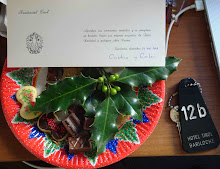














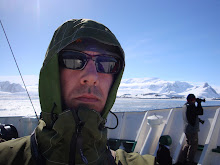




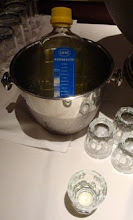
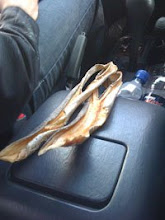








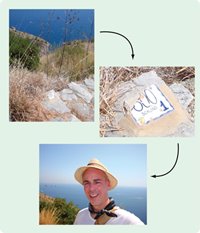




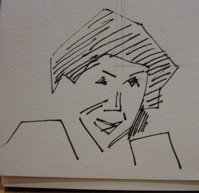
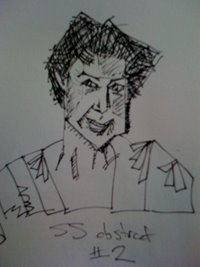








1 comment:
That's amazing you lack of seasickness. I'm on the edge of my seat reading through this.
Post a Comment